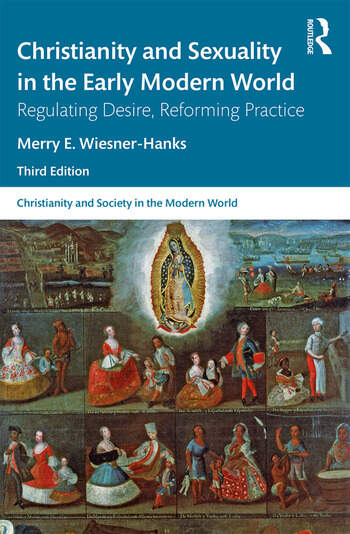(Source: Routledge)
Routledge is publishing a new
edition of Christianity and Sexuality in the Early Modern World.
ABOUT THE BOOK
Christianity and Sexuality in
the Early Modern World surveys the ways in which people from the time
of Luther and Columbus to that of Thomas Jefferson used Christian ideas and
institutions to regulate and shape sexual norms and conduct, and examines the
impact of their efforts.
Global in scope and geographic in
organization, the book contains chapters on Protestant, Catholic, and Orthodox
Europe, Latin America and the Caribbean, Africa and Asia, and North America. It
explores key topics, including marriage and divorce, fornication and
illegitimacy, clerical sexuality, same-sex relations, witchcraft and love
magic, moral crimes, and interracial relationships. The book sets its findings
within the context of many historical fields, including the history of gender
and sexuality, and of colonialism and race.
Each chapter in this third
edition has been updated to reflect new scholarship, particularly on the actual
lived experience of people around the world. This has resulted in expanded
coverage of nearly every issue, including notions of the body and of honor,
gendered religious symbols, religious and racial intermarriage, sexual and
gender fluidity, the process of conversion, the interweaving of racial identity
and religious ideologies, and the role of Indigenous and enslaved people in
shaping Christian traditions and practices. It is ideal for students of the
history of sexuality, early modern Christianity, and early modern gender.
ABOUT THE AUTHOR
Merry E. Wiesner-Hanks is
Distinguished Professor of History Emerita at the University of
Wisconsin-Milwaukee, USA. The senior editor of the Sixteenth Century
Journal, she is author or editor of thirty books and many articles
that have appeared in English, German, French, Italian, Spanish, Portuguese,
Greek, Chinese, Turkish, and Korean.
TABLE OF CONTENTS
Introduction; 1. Christianity to
1500; 2. Protestant Europe; 3. Catholic and Orthodox Europe; 4. Latin America
and the Caribbean; 5. Africa and Asia; 6. North America; 7. Conclusions
More info here


No comments:
Post a Comment